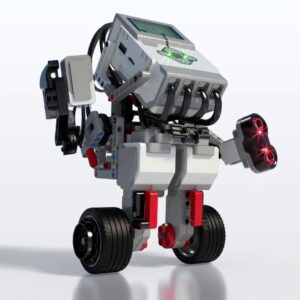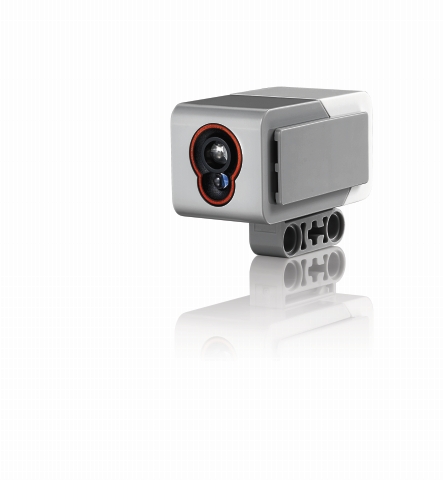The main goal of this year’s challenge is to integrate abstract scientific information with students’ daily lives while also emphasising the necessity of engineering concepts in modern living. It is also necessary to comprehend the historical development of this way of life as well as the significance of the advent of rudimentary machines in this process. The aforementioned is intended to be accomplished by emphasising the connections between abstract scientific notions such as “force”, “motion”, “friction”, and “pressure” and the operating principles of simple devices and people’s desire to make their lives easier.
The physics underpinning several of the six simple devices included in the challenge (wedge, inclined plane, lever, wheel, and pulley) were quantified by the Greek philosopher Archimedes (ca. 287-212 BC). When used and combined, these machines can provide people with an even greater mechanical advantage, as in the case of a bicycle or an automobile.
Mediterranean: source of life and culture |Regular Category, Beginners – Advanced
The Mediterranean Sea has long been known as “the mother of lighthouses,” as the earliest “lighthouses” in the world were built in its waters. Torches, which Libyan, Phoenician, and Greek engineers constructed on hilltops or at the entrances to coastal settlements, have been sailors’ companions since ancient times.
The oldest lighthouse is said to have been built at Troy, at Cape Sigion (today’s Kumkale). He followed him to the Myrmex reef (between Skiathos and Magnesia), where according to Herodotus, Xerxes in 480 BC. in order for his fleet to pass safely, he built an aleorium (high tower). The most famous lighthouse of antiquity is also located in the Mediterranean. That of Alexandria in Egypt, with a height of 130–160 metres and a beam of about 60 miles. Its fame was such that the islet Faros,” where it was built, baptised” future constructions of this type.
Despite technical advancement and the development of navigation systems, the Mediterranean countries’ national lighthouse agencies still maintain thousands of lighthouses each year, providing navigation with an additional level of safety. However, their practical utility is dwindling as artificial intelligence technology advances and modern electronic navigation maps become more intelligent.
The teams’ aim is to design and program autonomous robots capable of safely navigating the Mediterranean Sea and performing lighthouse maintenance and repair.
The game will be played in two ways:
A simpler one for primary school and beginning high school kids, and a more harder one for high school and advanced elementary children.
The teams will compete in the regionals first, followed by the final. The Mediterranean Sea has long been known as “the mother of lighthouses,” as the earliest “lighthouses” in the world were built in its waters. Torches, which Libyan, Phoenician, and Greek engineers constructed on hilltops or at the entrances to coastal settlements, have been sailors’ companions since ancient times.
The first lighthouse was built at Troy, at Cape Sigion (today’s Kumkale). He followed him to the Myrmex reef (between Skiathos and Magnesia), where, according to Herodotus, Xerxes built an aleorium (high tower) in 480 BC to allow his fleet to pass securely. The most famous antique lighthouse is also in the Mediterranean. Alexandria, Egypt, with a height of 130-160 meters and a beam of around 60 kilometers. It was so well-known that the islet Faros, where it was built, “baptised” successor structures of its type.
Despite technical advancement and the development of navigation systems, the Mediterranean countries’ national lighthouse agencies still maintain thousands of lighthouses each year, providing navigation with an additional level of safety. However, their practical utility is dwindling as artificial intelligence technology advances and modern electronic navigation maps become more intelligent.
The teams’ aim is to design and program autonomous robots capable of safely navigating the Mediterranean Sea and performing lighthouse maintenance and repair.
The game will be played in two ways:
A simpler one for primary school and beginning high school kids, and a more harder one for high school and advanced elementary children.
The teams will take part primarily in the regionals and then in the final.

The official supplier of equipment for the Panhellenic Educational Robotics Competition is knowledge research.
Free webinars for coaches in the context of the National STEM Contest 2024
Soon…
Visit the coaches’ forum and ask your questions to the category supervisors!
Παράλληλη κατηγορία “1913: Η απελευθέρωση των Ιωαννίνων” μόνο για μαθητές της Ηπείρου
Η δράση εκπαιδευτικής ρομποτικής με το ιστορικό θέμα «1913 : Η απελευθέρωση των
Ιωαννίνων» πραγματοποιείται στα πλαίσια εορτασμού των 110 χρόνων από την
απελευθέρωση της πόλης των Ιωαννίνων. Στόχος αυτής της πρόκλησης μη διαγωνιστικού χαρακτήρα, είναι η γεφύρωση του παρελθόντος
και του μέλλοντος της πόλης, προσεγγίζοντας, με ουσιαστικό τρόπο, σημαντικούς
τομείς, όπως η τεχνολογία, η μηχανική και ο προγραμματισμός. Δίνεται η δυνατότητα στους μαθητές να αποκτήσουν σύγχρονες γνώσεις και δεξιότητες εχέγγυα για το
μέλλον τους και ταυτόχρονα να έρθουν πιο κοντά στην ιστορία του τόπου τους,
γνωρίζοντας τα γεγονότα και αντιλαμβάνοντας τη στρατηγική που ακολουθήθηκε για
την απελευθέρωση της πόλης από τον Οθωμανικό ζυγό στις 21 Φεβρουαρίου του 1913.
• Επιτρεπτές ηλικίες διαγωνιζόμενων: Ε’ Δημοτικού μέχρι Α΄ Λυκείου (10-16 ετών)
• Σε κάθε ομάδα επιτρέπεται η συμμετοχή ενός μόνο μέλους ηλικίας κάτω των 10
ετών.
• Κάθε ομάδα αποτελείται από 3 έως 4 μαθητές και από 1 προπονητή.
Για περισσότερες πληροφορίες κάνετε κλικ εδώ για να επισκεφτείτε το website
Οι ομάδες θα διαγωνιστούν στον Περιφερειακό Αγώνα στην Ήπειρο, 19/03/2023 στο 3ο Δημοτικό Σχολείο Iωαννίνων “MAPOYTΣEIO”.
Έχετε απορίες σχετικά με τους κανόνες ή με τη διαγωνιστική διαδικασία;
Επισκεφθείτε το forum των προπονητών και θέστε τις ερωτήσεις σας στους υπεύθυνους των κατηγοριών!

Επίσημος προμηθευτής εξοπλισμού για τον Πανελλήνιο Διαγωνισμό Εκπαιδευτικής Ρομποτικής είναι η Διερευνητική Μάθηση.
Επιτρεπόμενα υλικά
• Μικροελεγκτές, κινητήρες και αισθητήρες από τα πακέτα LEGO NXT, LEGO SPIKE
ή LEGO EV3, και ο αισθητήρας χρώματος της HiTechnic, (HT color sensor). Κάθε
ομάδα μπορεί να χρησιμοποιήσει μόνο έναν μικροελεγκτή, μέχρι 4 κινητήρες και
μέχρι 4 αισθητήρες.
• Δομικά στοιχεία από οποιοδήποτε πακέτο της LEGO. Απαγορεύεται η χρήση
οποιουδήποτε άλλου δομικού ή στερεωτικού υλικού.
Φόρμα Εγγραφής
(**Ο αριθμός συμμετοχών ισοδυναμεί με τον αριθμό των ομάδων που θέλετε να δηλώσετε. Μπορείτε παρακάτω να βρείτε το έντυπο γονικής συγκατάθεσης και να το προσθέσετε στη φόρμα σας συμπληρωμένο, ένα για κάθε μαθητή. Το έντυπο θα το έχετε μαζί σας και την ημέρα του διαγωνισμού εκτυπωμένο για να το καταθέσετε στους υπεύθυνους.)









